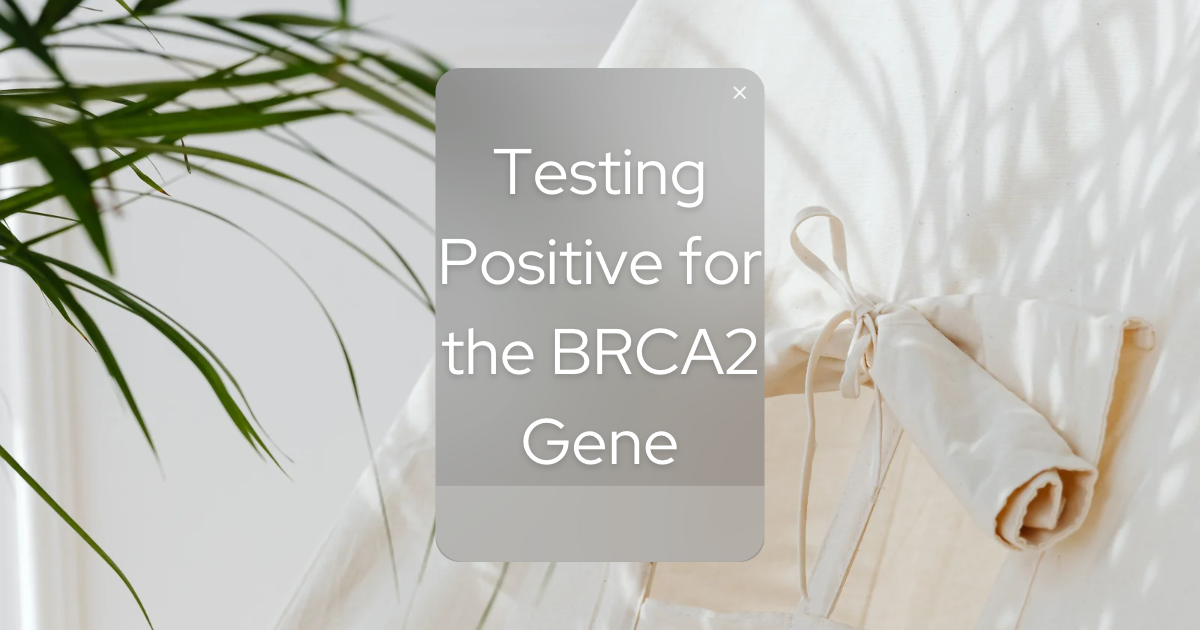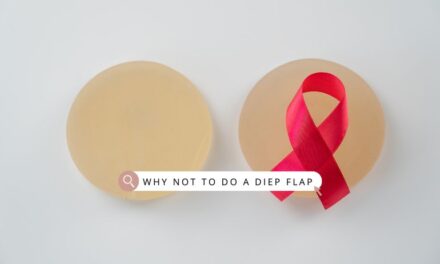I was ready to start this year off strong when I wrote this post but literally as I hit publish, I got sick. I caught a bad cold that lasted for a couple of weeks. But I was determined to still have my best year yet so I started scheduling my doctor’s appointments–because healthy girls see their doctors. I got my first pap smear since having BC (judge someone else) and while I was there, I qualified to have some genetic testing done for cancer. I never in a million years expected it to come back positive for the BRCA2 gene.
This news came after getting over E. coli. Yes, e. coli. Devastated feels like an understatement.
BRCA2 Gene? What’s that?
The BRCA2 gene is a human gene that produces a protein called breast cancer type 2 susceptibility protein. The protein is involved in repairing damaged DNA, which helps prevent the development of cancer. Mutations in the BRCA2 gene can increase the risk of developing breast, ovarian, pancreatic, and other cancers. Inherited mutations in the BRCA2 gene can be passed down through families and are associated with hereditary breast and ovarian cancer syndrome (HBOC). People with HBOC are at increased risk of developing these types of cancers, often at younger ages than the general population. Genetic testing can be used to determine if a person has a BRCA2 mutation.
Having a mutation in the BRCA2 gene can significantly increase a person’s risk of developing certain types of cancer. According to the National Cancer Institute, women with a BRCA2 mutation have a lifetime risk of up to about 85% for breast cancer and up to about 44% for ovarian cancer. Men with a BRCA2 mutation have an increased risk of developing breast cancer, as well as an increased risk of developing prostate cancer and pancreatic cancer. However, it’s important to note that not everyone with a BRCA2 mutation will develop cancer, and not all cases of cancer are caused by a BRCA2 mutation. Environmental factors and lifestyle choices also play a role in cancer development. It’s important for individuals with a family history of cancer or other risk factors to talk to a healthcare provider about their personal risk and options for cancer screening and prevention.
Ok, So now what? How can you prevent the cancer from developing?
There are several preventative treatment options available for individuals with a BRCA gene mutation or other high-risk factors for breast or ovarian cancer. These options may include:
- Increased surveillance: This involves more frequent cancer screenings, such as mammograms and breast MRIs for breast cancer and transvaginal ultrasounds, and CA-125 blood tests for ovarian cancer. The goal of increased surveillance is to detect any cancer at an early, more treatable stage.
- Risk-reducing medications: Certain medications, such as tamoxifen or raloxifene, may be used to reduce the risk of developing breast cancer in women with a high risk of the disease. Women may also consider taking oral contraceptives, which have been shown to reduce the risk of ovarian cancer.
- Prophylactic surgery: This involves the surgical removal of the breasts (mastectomy) or ovaries and fallopian tubes (oophorectomy). For women with a BRCA gene mutation, prophylactic mastectomy can reduce the risk of developing breast cancer by up to 95%, while prophylactic oophorectomy can reduce the risk of developing ovarian cancer by up to 80%. Prophylactic surgery is a personal decision that should be made in consultation with a healthcare provider.
- Lifestyle modifications: Certain lifestyle modifications, such as maintaining a healthy weight, engaging in regular exercise, limiting alcohol consumption, and not smoking, may help to reduce the risk of developing cancer.
It’s important for individuals with a BRCA gene mutation or other high-risk factors for breast or ovarian cancer to discuss these options with a healthcare provider to determine the best course of action for their individual situation.

I discussed it with my healthcare provider and made my decision
On June 5, 2023, I will be having a double mastectomy with reconstruction. I haven’t made a decision regarding my ovaries–honestly, it’s just too much to process in this little time. I was really nervous about sharing this decision because I needed to be able to make it without the influence of others. Making the decision to remove the breast tissue was an easy one for me. I’ve breastfed all three of my kids, I’ve nurtured them, and it’s been a place of comfort and a source of nourishment. They’ve completed their life tasks and it’s time to let them so I can be great.
But why so soon, Aaronica?
My 40th birthday is on July 20 and I don’t want the anxiety of wondering if every lump or bump that is normal is cancer.
But I’ll be taking you all on the ride with me as I prepare for surgery and how I’m living to prevent cancer.
How are you doing?
Now, I’m ok. But I wasn’t initially.
2023 has been a really hard year. I would say it’s been the hardest year so far but it isn’t because I’m not alone. I have my husband as my rock and my kids are the air that I breathe. I’ve created hands-down the best village that is comprised of some of the kindest and most action-oriented people I could be blessed to know. But I was crushed when I initially found out.
I took the test in January 2023. I didn’t get the results back until March and I honestly thought I was in the clear. Because it had taken so long to get the results back, I thought they were negative for any mutations. When I did finally get the call, I was numb. I had just started feeling better from my time with e.Coli and now this? I didn’t want to see the silver lining that I’d found out early enough to do something.
And then I couldn’t stop crying. See, I was friends with Renee from MSC Mommy Life who was diagnosed with breast cancer in 2015. We became friends on Instagram and we would chat via DMs there. I would watch her stories and see her posts as she struggled to win her battle with breast cancer which ultimately took her life. As I’m remembering her, tears are now flowing. I know that if Renee was told in 2014 that she could live longer, love longer, and watch her kids grow longer by having a surgery to remove her breasts, she would have done it. She loved her family and her kids so much. And I love mine just as much.
So when I met with the breast tissue doctor 3 weeks after being told, I knew what I wanted to do. Thinking about Renee, my Auntie Pam, my grandfather, and other family members who have lost their lives to cancer, making the decision was easy. One of the things that I didn’t expect to feel was validated. My doctor expressed how serious the BRCA2 gene is and so that made me feel like my random outbursts of sobs were ok. The first 3 weeks after finding out was really hard and it felt like my life was in slow mo while everyone else just went along.
I was mad at my body. Dealing with hidradenitis suppurativa has been a lot. Last year I had a really bad flare under my breast that stayed open for a month. My body is finally back in remission. And now this? I was super mad. It wasn’t until after I met with Dr. Woo–my breast specialist–that I finally felt like I could breathe. She was so matter-of-fact and really made me feel like I was capable of handling this. Leaving her office, I felt seen, validated and empowered to take back my health.
I wasn’t sure if I wanted to share this journey. But I need to–for my health and to help others navigate this too.
So, I’m an open book. Buckle up because this ride is going to be a fast one.






